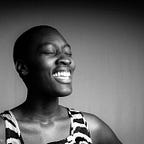The Art of Dying
Hundreds of people gathered at The Laundry in San Francisco to explore the visceral sensations of death through altered realities.
Virtual reality gets a bad rap for being escapist — the video gamification of experience. But when done properly, it can bring us fully into our bodies as well as our minds. The Art of Dying, an interactive art show in virtual and augmented reality that featured over 40 artists, kept its feet firmly in the physical world.
The event brought hundreds of people to San Francisco gallery space The Laundry, and was a hot attraction during Re:Imagine | End of Life—a weeklong citywide festival about living and dying through art and experience. This being the Bay Area, technology offered a powerful platform to bring some of death back into life.
Walking down the darkened stairs of the gallery to the VR space, attendees were greeted by ephemeral floating clouds and wheeling lights in red, green, and blue. The first room they moved through had distinct areas set up for different experiences: a cluster of desk chairs, a circle of wheelchairs.
One area featured a row of seats that evoke an airport lounge; immediately behind it was a thicket of cushions, supporting people lying on the ground staring up into headsets. Each space had its own discernible heartbeat.
Many of the experiences were passionate celebrations of the human form. Round Round, a modern dance piece that disorients through the use of a mirrored floor, featured bodies flying through the air in a syncopated kaleidoscope of flesh.
Across the room, the experience in the wheelchairs seemed to feature the same dancers and similar choreography. But the dance takes place in the mind of a young man who’s been paralyzed in an accident. He, and we, are trapped in his body: painfully present during a family argument which presupposes that he’s already gone.
Other experiences, such as Zen Garden, sought only to calm and delight. Upon donning the headset, viewers floated through space surrounded by colorful, monstrous blobs of what seem to be different colors of paint. They throw out tendrils and drip toward and away from each other as the viewer glides by, to the soundtrack of Tibetan throat singing. Upon leaving the headset, it suddenly seems absurd that VR is widely seen as tech overload.
The space was full of people having visceral and intensely personal experiences. They were in the company of many others on similar paths, but ultimately they are alone. And yet there are people who had gone before them and who will go after — even people shepherding them through the experience. You don’t have to squint to locate the parallels with death.
“What does it mean to die? To lose someone? To be mortal?” asks Kelly Vicars, who produced the event. “These questions propel so many of our narratives and stories. And yet death is hard to talk about. It scares us. My team and I realized that experiential art could be a fantastic vehicle for exploring death.” So they began brainstorming about creating a safe space to explore the great unknown.
One woman in a simulation, finishing the introductory portion, stood and began to move through space in the dark. It was an act of aching vulnerability made more poignant by the attendant flitting around her, adjusting wires and ensuring her safety despite blindness to the world.
Being bumped or jostled while inside an experience is surprisingly terrifying. Your mind may know you’re sitting safely on an ottoman with a handful of other people, but your body does not. There’s an almost mortal terror that strikes when confronted by a world beyond what you can see.
Upstairs in the augmented reality area, the feeling was more communal. People clustered around bands of colored light as images are projected above them on the ceiling. In another room, a group of people gathered around a woman laying on a table in a VR headset — almost as though they were attending her wake.
In the most traditional “gallery” space, paintings and drawing were given overlays with apps like Blippar and Aurasma. In front of one drawing, the handheld device triggers a deluge of rain onto the head of a woman conveniently already holding an umbrella. Another features a cemetery in which the dead rise up to meet us (on iPhones, of course).
One pen and ink drawing offered the best summary of the event. In it, a man and his laptop are depicted from behind. The machine seems inert, until activated through the tablet’s gaze. Instantly the screen lights up, releasing an endless string of black crows. Vibrant and surprising, the raucous caws echo as they fly up and away.
Read more stories about the people, ideas, and moments of OpenIDEO’s End of Life Challenge.
